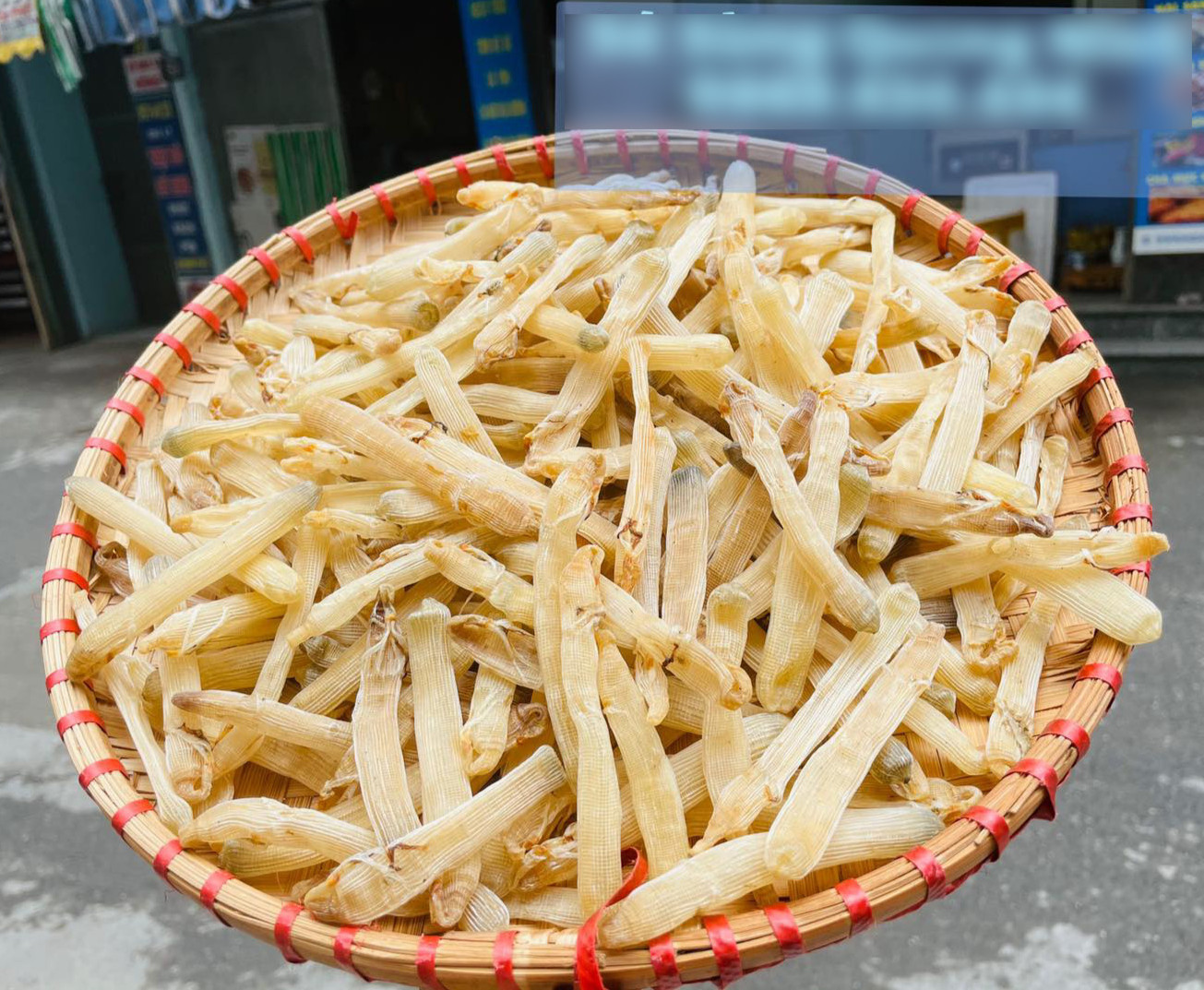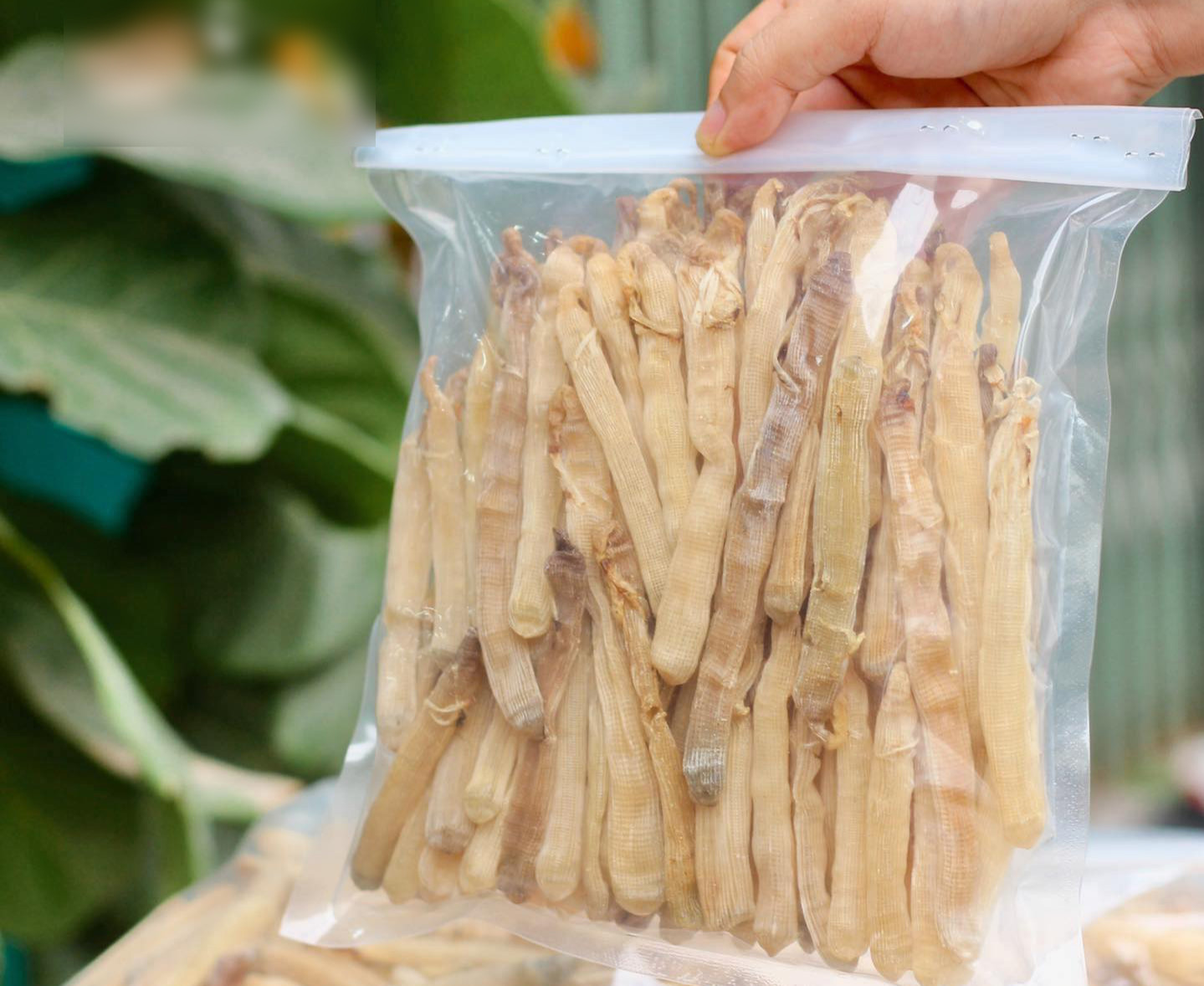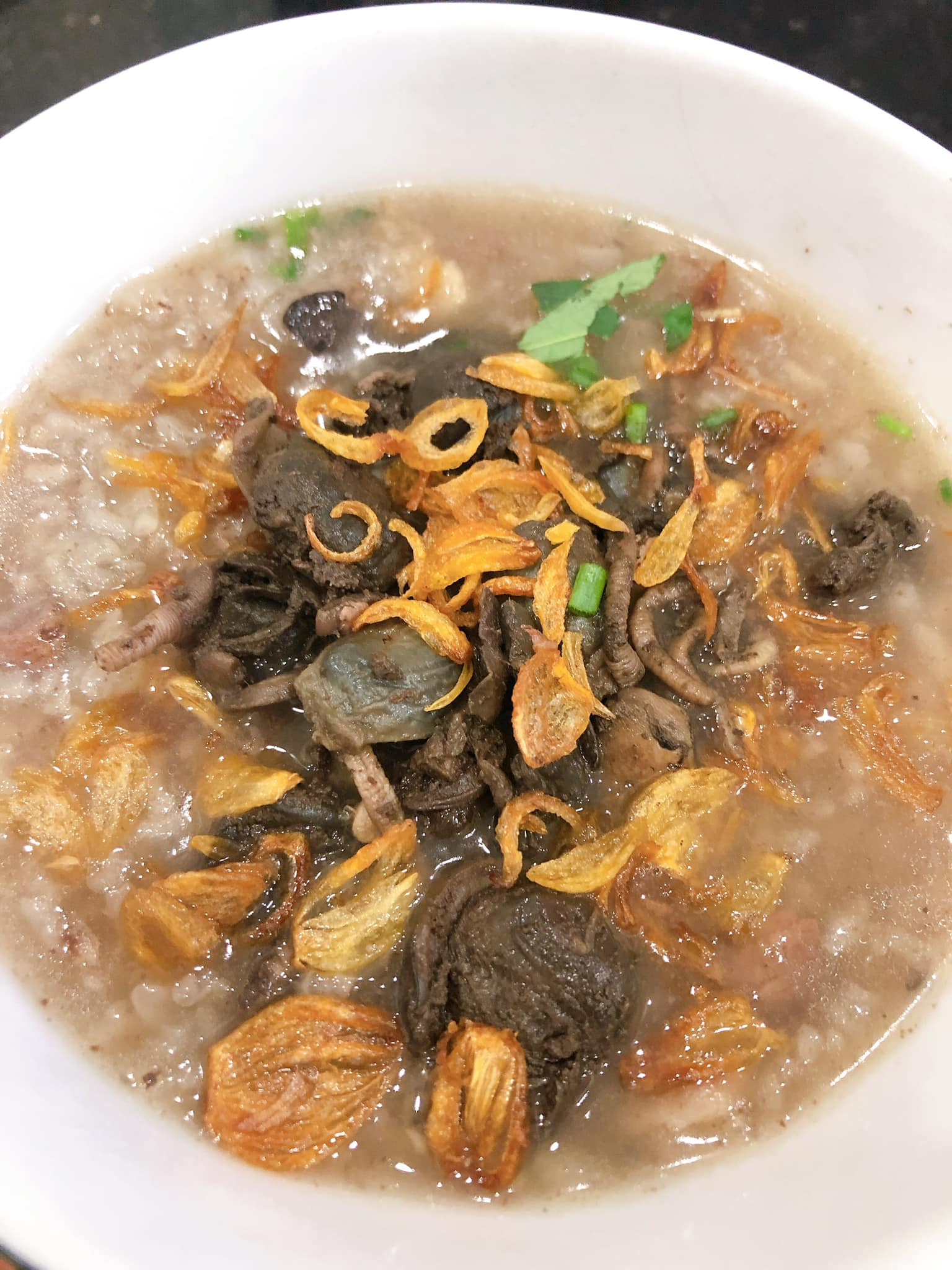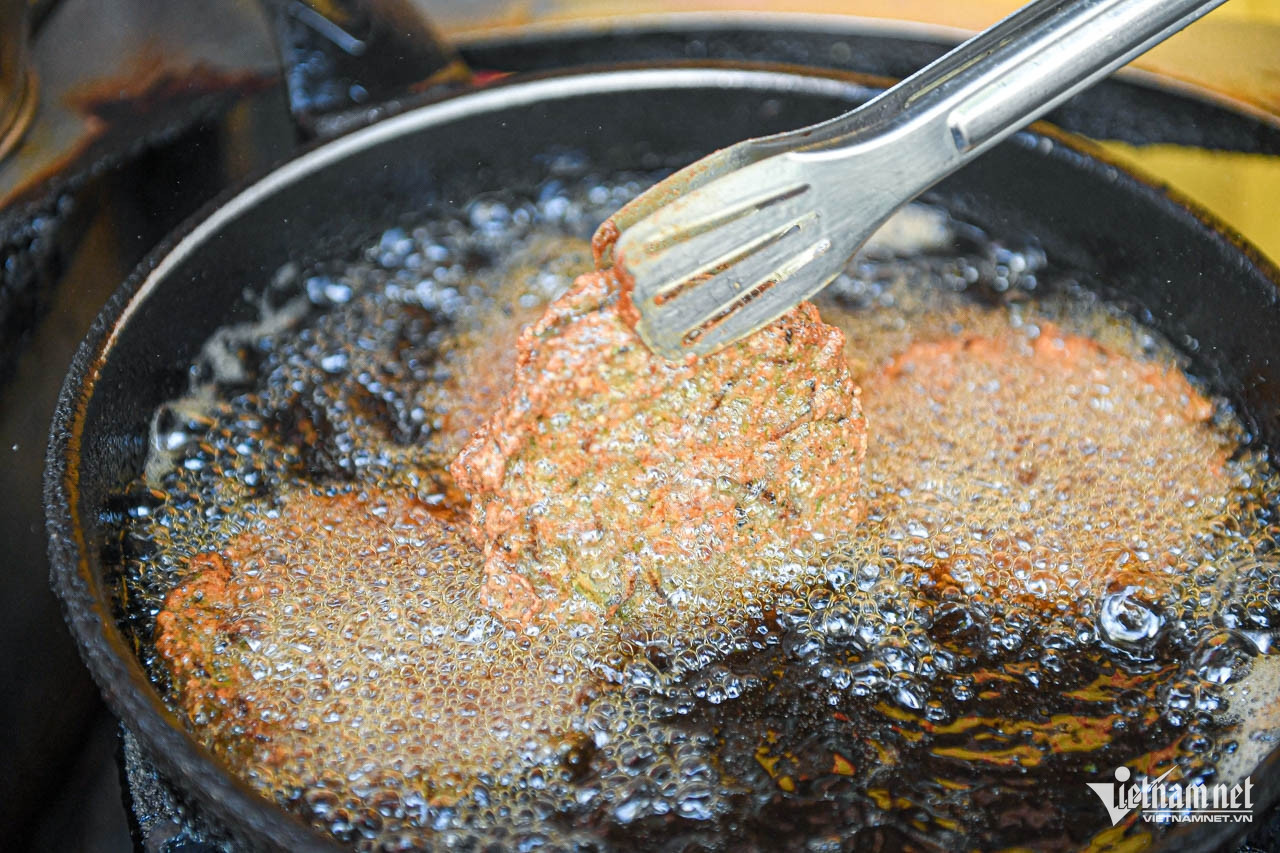Quang Ninh attracts visitors not only with its spectacular scenery but also with its rich culinary culture, offering a range of rare, naturally abundant delicacies such as sea worms (sá sùng), sam (horseshoe crabs), blood cockles (ngán), and rươi (sand worms).
Sá sùng (sea worms)
 |
 |
Sá sùng, also known as marine worms, sand ginseng, or sea ginseng, has a rather alarming appearance with its reddish-brown color, resembling an oversized earthworm with tiny ridged lines on its body.
These creatures typically hide under sandy crevices and rocky seabeds, sometimes at depths of up to 30 meters. They can only be harvested during low tide, from March to July each year.
Fresh sá sùng is tender and chewy, often stir-fried with vegetables or used in soups and porridge. The dried variety, however, is prized for its crunch and can be stored for long periods. When grilled, dried sá sùng emits a rich aroma, making it a popular snack among men and even considered tastier than dried squid.
A kilogram of fresh sá sùng sells for about USD 12 - USD 16. The dried version is significantly more expensive, ranging from USD 160 to USD 280 per kilogram, depending on quality.
Nutritionally, sá sùng is rich in protein, containing 18 amino acids and 17 essential minerals. In traditional medicine, it’s believed to benefit men’s health, help treat asthma, and aid children with rickets.
Sam (horseshoe crabs)
 |
 |
Horseshoe crabs are marine creatures commonly found along the coasts of Quang Ninh and Hai Phong. They have a tough, helmet-like shell, a flattened round body, and eight pairs of legs. They also have four eyes - two on the sides and two on top - and a long, spiked tail.
Horseshoe crabs are often seen in pairs, with the male clinging to the back of the female. The Vietnamese phrase “stuck together like sam” symbolizes loyal, inseparable couples. Fishermen usually catch them in pairs and release any single ones back into the sea.
The horseshoe crab season lasts from April to September. They are usually sold in pairs for USD 28 - USD 48, and prices can spike to USD 60 during scarcity.
While horseshoe crab meat is delicious, it must be prepared meticulously. Improper handling can cause poisoning, so only experienced chefs should cook it.
Popular dishes include grilled cartilage, stir-fried meat with noodles or lemongrass and chili, and sweet-sour stir-fried legs. The most favored are sam salad and sweet-sour stir-fried crab legs.
Due to their limited shelf life and labor-intensive preparation, horseshoe crabs are typically only found in high-end restaurants at premium prices.
Ngán (blood cockles)
 |
 |
Ngán, a bivalve mollusk similar to clams but larger, is known for its exceptional flavor and high nutritional value. While found in various coastal regions, Quang Ninh’s ngán is considered especially fragrant and sweet.
According to locals, ngán is harvested from March to October (lunar calendar), when the meat is plump and fresh. However, catching them is difficult as they burrow deep in the sand and are especially elusive during the winter.
Ngán is a nutrient-rich food containing proteins, fats, sugars, vitamins, and essential minerals.
Due to its rarity and health benefits, ngán is expensive. Larger ngán (8-10 per kilogram) cost USD 30 - USD 40 per kg, while smaller ones (15-20 per kilogram) range from USD 18 - USD 24 per kg.
Despite the price, ngán remains a coveted delicacy thanks to its sweet flavor and versatility. Ngán porridge is the most popular dish among diners.
Rươi (sand worms)
